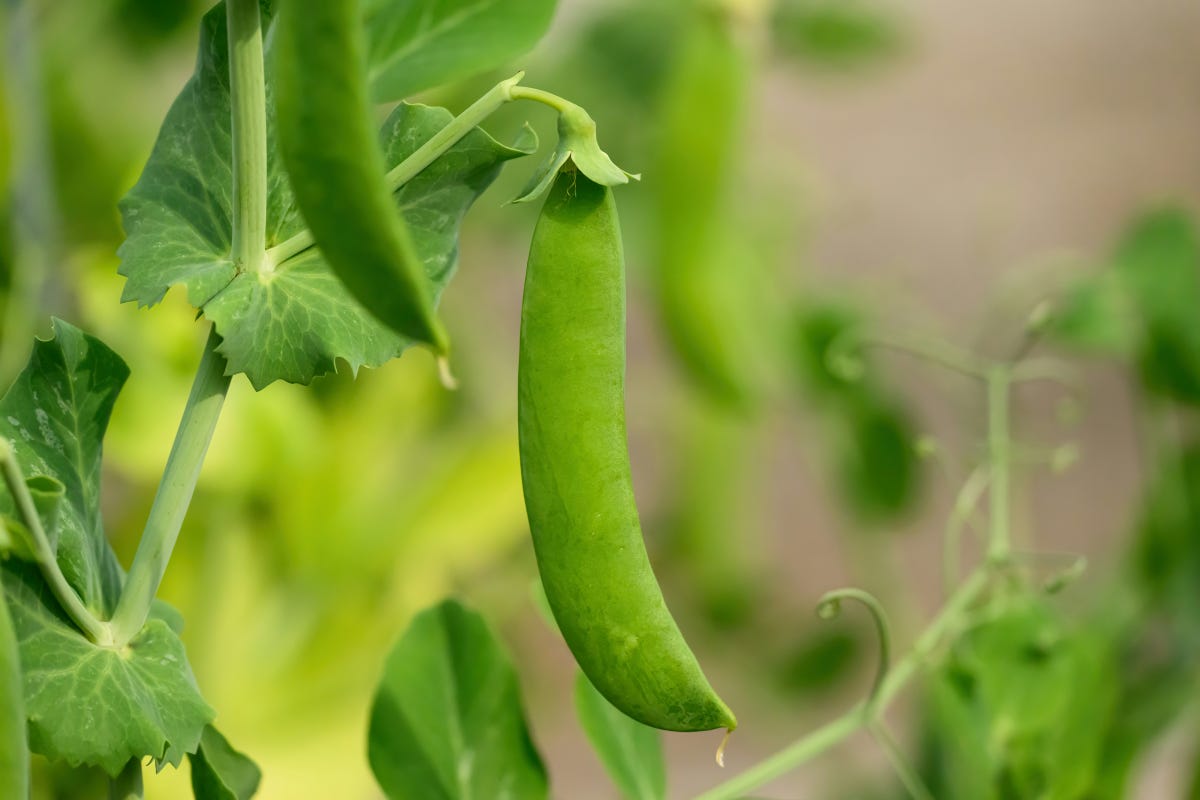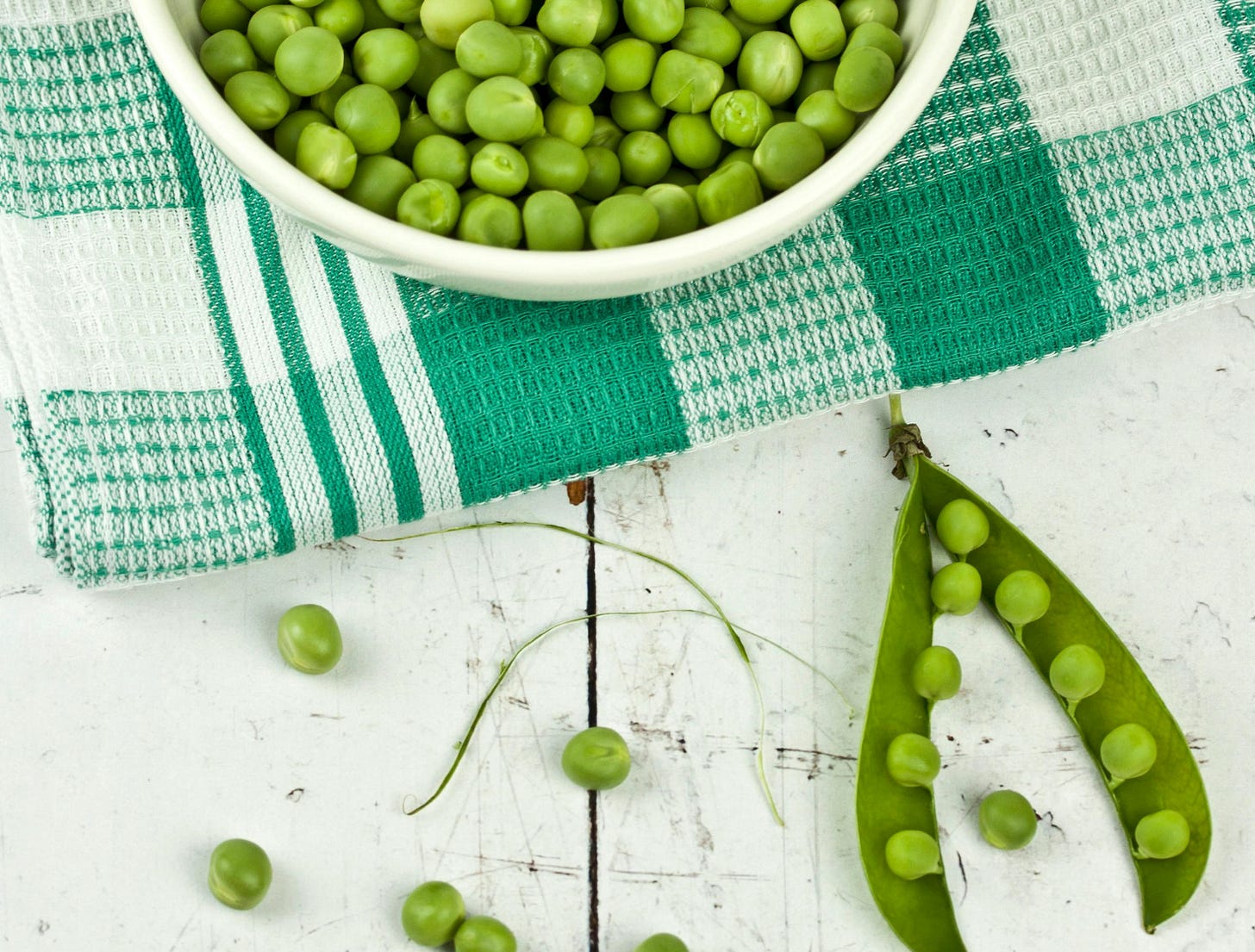Peas for Great-Aunt Paulina
A story for all children 4-6, with background and a recipe
“Being very old is hard,” Mom had said as they drove to Great-Aunt Paulina’s. Now, listening to Great-Aunt Paulina, Evie knew it was true.
Great-Aunt Paulina’s was boooooring. There were no toys, and except for narrow paths, every inch of yard was garden. Evie couldn’t even play hopscotch or jump rope!
Instead, she sat at the edge of the sofa and kicked the coffee table.
“Who will weed and water my garden after I move to the care center?” asked Great-Aunt Paulina.
“We’ll see.” Mom patted Great-Aunt Paulina’s wrinkly hand. Then she looked at Evie. “Outside,” she whispered.
Dragging her feet, Evie started for the back door.
“My peas are ready to pick! I want peas for supper!” Was Great-Aunt Paulina about to cry? wondered Evie as she stepped onto the back stoop. She sat down, plunked her elbows on her knees, chin in hands, and sulked.
Suddenly she remembered Bubbie saying, “When you’re bored, do a hesed, a kindness, for someone else.”
She straightened. What kindness could she do for poor old Great-Aunt Paulina? What does an old lady need?
Peas from the garden.
Evie bit her lip. I don’t even know which plants are the peas, she thought.
Near the stoop were rows of flowers. At the back, tall plants climbed the fence. She thought she saw cucumbers hanging from some.
I’ll start looking there, she thought, and skipped up the path toward the fence.
The cucumber plants were very tall. Near them were shorter plants that almost reached Evie’s chest. Wiry tendrils spiraled out from leaves while others twisted in the wire fence. Among the green she spied flat pods. Sweet, crunchy snow peas!
Ptha! She spit out a tough-as-cardboard pod. Not snow peas.
Well, she thought, they look like peas. But peas were fat and round. Maybe those long, skinny, pods with round lumps were peas
When she cracked one open, five small balls stared up from a shiny green cradle.
They looked just like frozen peas. Why were they so special that they made her great-aunt cry? Evie scrunched her forehead, put one in her mouth, and chewed.
Her eyes flew open as amazing flavor flooded her mouth. She gobbled down the rest of the peas from that pod.
She ran to the stoop, grabbed a basket, and ran back to the peas. She broke a fat pod off the vine and dropped it in the basket, then another. Soon the basket was full.
Back at the stoop, she took another basket and sat down. She opened a pod and picked off the peas one by one, dropping them in the basket. Then she tossed the empty pod onto the ground.
She took another pod and opened it. This was slow work!
Too bad you can’t unzip these, she thought, running her finger down the row of peas. Plop-plop-plop-plop-plop, the peas just rolled into the basket! She giggled. She would zip through the basket by unzipping the peas.
“Evie?” called Mom. “Where are you?”
Evie handed Mom the basket of peas. “These are for Great-Aunt Paulina.”
Mom stared. “You picked them?”
Evie shrugged. “It wasn’t hard. I can pick lots more, too. Can you make that yummy summer pea soup for Shabbat?”
Mom laughed. “Great-Aunt Paulina will be very happy. And that soup is a wonderful idea. I bet she’ll love it.”
Tonight, Evie thought, she’d call Grandma. She’d tell her that when she did the hesed, she stopped being bored. Even better: she’d made two people happy.
After lunch she’d think of other heseds she could do.
Not at all bored and feeling very grown up, she went inside for lunch.
For Parents, Teachers and Others
I remember visiting my mother’s great-aunt when I was about 5. She had a garden with green beans and taught me to pick them, pull the strings and break off both the stem and blossom ends. This was back 70+ years ago, when green beans were tough and had a string-like bit that was too tough to eat and needed to be removed, along with the stem and blossom ends, before cooking. I remember this visit—the only time I met Aunt Bertha—fondly, although my mother said it was a disaster. This former European opera singer had been fluent in five languages, but during the visit would begin speaking in one language, switch to a second, and cycle through all five in the course of a few moments. She apparently had cats that had the run of the house, the beds were full of fleas, and we kids were roused in the middle of the night and rushed to a hotel. I don’t remember that, just how grown up I felt helping get the beans ready for dinner. That memory was the seed from which this story grew.
Children love being useful and doing grown-up jobs, even simple ones like picking and shelling peas or breaking the ends off green beans. With today’s reliance on prepared foods, two working parents, and daycare or nannies, I do not know how many opportunities kids have for these moments, but they loom large and happily in my memory.
This summer soup—delicious cold and tasty even when made with frozen peas—is worth trying, although if you are kosher you wouldn’t serve it with a dairy garnish at a regular Shabbat dinner when meat or chicken is served.
What Is Jewish about This Story?
The theme of this story—that even children can and should do good deeds for other people—is intrinsically Jewish. The concept of “hesed” is central to Judaism. In the daily prayers we acknowledge that God does His creations, including His creatures, good every day, and our responsibility is to emulate Him. This means to do good deeds.
A major difference between Judaism and Christianity is the wording of a central obligation. Hillel taught, “What is hateful to you, do not do to others.” This instructs us to leave others alone to their habits and beliefs, as long as they do not impinge on us or on God’s fundamental laws. This is why Jews do not proselytize.
God interferes—as He did when directing the Jews to conquer the peoples living in the land—when necessary. The ancient tribes such as the Canaanites were barbarians who practiced human sacrifice and sexual immorality. They used these hateful behaviors on the Jews to subvert us; for example, Shechem raping Jacob’s daughter Dina and the women of Midian coming out to seduce the Israelite men.
But Jews are not supposed to interfere otherwise. It is not our place to impose our desires—what we would like someone else to do to or give to us—on others, as is instructed by the Christian “Do unto others as you would have them do unto you.”
Progressive Jewish activists who support the left-wing version of “tikkun olam” of forcing major societal changes, and therefore support such vile practices as abortion and transitioning children to fake genders, in direct contradiction to traditional values, are absolutely wrong according to Jewish law.
Tikkun olam in Jewish law1 means repairing the world by repairing ourselves first. Some examples are being our best selves, teaching our children to be their best selves, controlling anger, resolving conflicts peaceably, and bringing holiness to the physical world through respecting nature as well as through our prayers, blessings, and behavior.
This does not mean ignoring injustices, but it means not confronting them in ways that go against God. There was wide support for the social changes of the Civil Rights movement, a nonviolent effort to remove blatantly racist laws, for example, unlike support for killing unborn children while simultaneously supporting the sexual “freedom” and disdain for marriage, as many feminists do, that lead to many unwanted pregnancies.
Another example of something that contradicts Jewish law is the food fight. This activity is commonly portrayed in books, supposedly showing a light and carefree mood. It is virtually unknown in traditional Jewish circles. There is no explicit prohibition; the thought of throwing food is simply inconceivable2 because wasting food, like maltreating animals, is considered an affront to God who provides it by creating the plants or animals, providing rain, soil, and sun, giving farmers strength to raise it, and giving us jobs to afford it.
So although this story only uses the word “hesed” twice, the story is about a child growing spiritually and socially by applying a Jewish concept to her life. Suitable for all children, it is, at its core, a Jewish story of everyday Jewish family living.
Recipe
Evie’s Favorite Summer Pea Soup
Serves 6-8
1/2 yellow onion, chopped
3 cloves garlic, chopped
1/3 to 1/2 cup chopped fresh parsley
1 Tbsp. fresh dill or tarragon (choose one, they are not good together)
4 cups broth—use soup powder or strained chicken or vegetable broth
1 13.5 oz. (450 ml) can coconut milk, or a scant cup of any dairy or other milk
5 cups fresh or frozen green peas
Salt and black pepper to taste
Optional garnishes: parsley, sour cream or crème fraiche, toasted walnuts, or a dribble of olive oil
Add a splash of broth to a large pot. Add the onion and garlic; cook until translucent, about 3 minutes. Add the herbs and cook another minute or two.
Add the rest of the broth, milk, and peas. Cover the pan. Turn on high heat until the soup boils. Then uncover and turn to low. Simmer for about 10 minutes. Add salt and pepper to taste.
Using a stick blender, process the soup until smooth. Alternatively, let the soup cool and puree in a regular blender. This soup lasts several days in the refrigerator and freezes well. It can be served hot with a sprig of parsley on top or toasted walnuts and a dribble of olive oil to garnish, or for a dairy meal make with vegetable broth and serve cold with a dab of sour cream or crème fraiche.
Recipe adapted by the author from a recipe from www.frommybowl.com .
https://www.chabad.org/library/article_cdo/aid/3700275/jewish/What-Is-Tikkun-Olam.htm#5_What
Inconceivable: simply never thought of, impossible to imagine.








Wonderful children's story about family, caring and acts of chesed. Loved it!